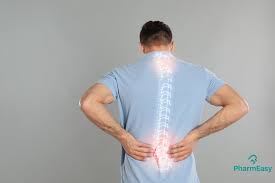Spanning from the base of the skull to the pelvis, the spine is a complex structure composed of 33 vertebrae, intervertebral discs, nerves, and supporting muscles and ligaments. Proper spinal health is vital for maintaining mobility, reducing pain, and preventing injury.

The Anatomy of the Spine
The spine is divided into several regions: the cervical (neck), thoracic (mid-back), lumbar (lower back), sacral (pelvic), and coccygeal (tailbone). Each region has a specific function and range of motion:
- Cervical Spine: The cervical spine consists of seven vertebrae (C1-C7). It supports the head and allows for a wide range of head movements, including rotation and tilting. Common issues in this region include cervical spondylosis and herniated discs.
- Thoracic Spine: The thoracic spine is made up of twelve vertebrae (T1-T12) and is attached to the ribs. It provides stability to the upper body and protects the organs within the chest cavity. Conditions such as kyphosis and scoliosis can affect this region.
- Lumbar Spine: The lumbar spine contains five vertebrae (L1-L5) and bears much of the body’s weight. It is essential for activities involving bending and lifting. Common problems in the lumbar region include lower back pain and sciatica.
- Sacral Spine: The sacral spine consists of five fused vertebrae (S1-S5) and forms the back part of the pelvis. It connects the spine to the pelvis and supports the weight of the upper body.
- Coccygeal Spine: The coccyx, or tailbone, is composed of four fused vertebrae. Though small, it serves as an attachment point for various muscles, tendons, and ligaments.
Maintaining Spinal Health
Maintaining a healthy spine involves a combination of proper posture, regular exercise, and healthy lifestyle choices:
- Posture: Good posture minimizes stress on the spine and helps prevent back pain. When sitting, use a chair with proper lumbar support, keep your feet flat on the floor, and avoid slouching. When standing, distribute your weight evenly on both feet and engage your core muscles to support your spine.
- Exercise: Regular physical activity strengthens the muscles that support the spine, improves flexibility, and enhances overall spinal health. Incorporate exercises that focus on the core, such as abdominal crunches and lower back extensions. Activities like walking, swimming, and yoga can also benefit spinal health.
- Lifestyle Choices: Maintaining a healthy weight reduces the strain on your spine. A balanced diet rich in calcium and vitamin D supports bone health, while staying hydrated keeps intervertebral discs hydrated and functional. Avoid smoking, as it can impair blood flow to the spinal tissues and contribute to disc degeneration.
Common Spinal Conditions
Several conditions can affect spinal health, including:
- Herniated Disc: This occurs when the gel-like center of an intervertebral disc bulges out and presses on nearby nerves, causing pain, numbness, or weakness.
- Spinal Stenosis: Spinal stenosis is the narrowing of the spinal canal, which can compress the spinal cord and nerves, leading to pain and difficulty walking.
- Scoliosis: Scoliosis is characterized by an abnormal lateral curvature of the spine. It can range from mild to severe and may require treatment if it progresses.
- Osteoarthritis: Osteoarthritis of the spine involves the degeneration of the cartilage between vertebrae, leading to pain and stiffness.
Seeking Professional Care
If you experience persistent back pain or other spinal issues, consult a healthcare professional for a thorough evaluation and appropriate treatment. Options may include physical therapy, medications, or in some cases, surgical interventions. Early intervention can prevent further complications and promote a better quality of life.
